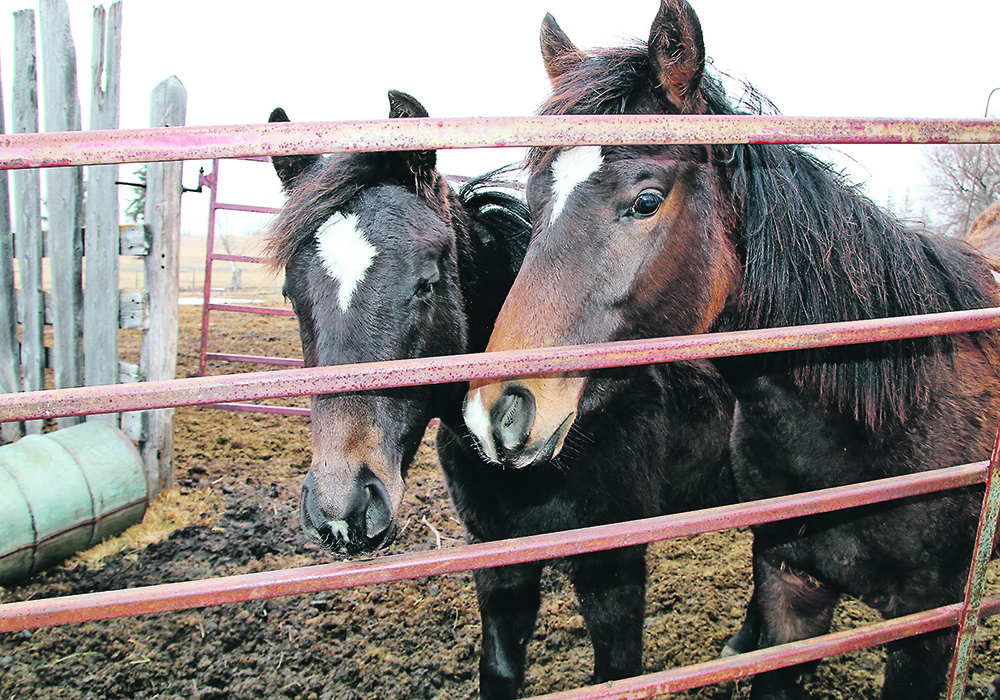The name track management might lead one to think of box stall shed rows at a race track. That was certainly my first impression.
However, it is actually the name given to a horse management style that is gaining popularity, particularly in places where land for turnout is scarce.
The basic idea is to spread out the herd’s necessities of life and provide incentive for movement to better replicate their natural environment.
Read Also

Saskatchewan dairy farm breeds international champion
A Saskatchewan bred cow made history at the 2025 World Dairy Expo in Madison, Wisconsin, when she was named grand champion in the five-year-old Holstein class.
Horses evolved on the grassland steppes of Eurasia and moved nearly continuously to graze relatively low-quality grasses and find water. Consider this: feral horses in natural settings spend more than 50 per cent of their time grazing.
Modern management couldn’t be farther from this evolutionary origin, and horses develop diseases and behavioural issues because of it. A few of these include laminitis (founder), obesity, crib biting and weaving.
Inactive horses may be at increased risk for any number of musculoskeletal injuries such as joint disease, tendon, ligament and muscle damage.
Not everyone has access to a multi-acre rotationally grazed pasture system that would provide not only sufficient nutrition but also ample environmental stimulation and exercise. And with drought threatening yet again on the Prairies, a system that maximizes available pasture and minimizes supplemental feed waste may be particularly timely and relevant.
How can we modify a herd’s situation to make use of this concept?
If you use a dry lot system and provide feed, try putting the hay at the opposite end of the enclosure from your water source as a low-stakes starting point. It is the horse equivalent of the recommendation to take the stairs instead of an elevator.
For the more adventurous, the track environment takes a relatively small area that is usually managed as a dry lot and fences it in such a way that a narrow track runs the perimeter of the enclosure. The track is typically narrow to promote movement. Horses on the track will walk between the necessities of life (water, shelter and food), increasing their exercise in the process. And there is something about the track enclosure that seems to promote walking in horses.
Some folks have gone so far as to introduce obstacles such as smooth logs that need to be stepped over and sand pits to trudge through. Fancier systems can even include bridges. Safety should be paramount when thinking of adding obstacles, so select these with care.
There is also the opportunity for creative feeding that incorporates hay balls, slow feed nets and other types of active feeders at several locations along the track. These feeders slow down how quickly horses eat and also reduce waste.
It is also easy to imagine the usefulness of automatic feeders in a track system. Shelter and shade can be spread out along the track, further promoting movement.
One option is to use electric or other temporary fencing to test drive the arrangement before investing in more permanent fencing structures.
An important safety consideration is of course the width of the track and safety of the fence. It would be unwise to use the system to turn out horses that are strangers to each other or herds that are prone to social hierarchy conflict. The lowest order horses need time and space to escape.
From this perspective, the choice of pen mates becomes especially important in a track system. Also consider the safety and temperament of horses you may place in a temporary fence system.
There is more to this than just weight management and fitness. Track environments fit into the broader welfare picture as a way to provide environmental stimulation. A quick internet search will give you plenty of additional information and resources to get started.
Dr. Jamie Rothenburger, DVM, MVetSc,PhD, DACVP, is a veterinarian who practices pathology and is an assistant professor at the University of Calgary’s Faculty of Veterinary Medicine. X: @JRothenburger















